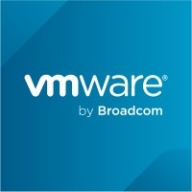


vCenter Configuration Manager and HashiCorp Terraform compete in infrastructure automation and management. HashiCorp Terraform often has the upper hand due to its flexibility and scalability, while vCenter Configuration Manager is favored for its deep integration with VMware environments.
Features: vCenter Configuration Manager is valued for detailed compliance management, robust configuration management, and seamless integration with VMware. HashiCorp Terraform is notable for multi-cloud infrastructure provisioning, strong support for Infrastructure as Code (IaC), and extensive community support.
Room for Improvement: vCenter Configuration Manager has complex initial setup, a steep learning curve, and limited non-VMware integrations. HashiCorp Terraform requires better state management, enhanced documentation, and improved ease of use.
Ease of Deployment and Customer Service: vCenter Configuration Manager has a challenging setup but robust customer support. HashiCorp Terraform offers straightforward deployment but receives varied feedback on customer service.
Pricing and ROI: vCenter Configuration Manager has high setup costs and licensing fees, with reliable ROI for VMware management. HashiCorp Terraform is cost-effective, open-source, and offers a quicker and clearer ROI.
| Product | Market Share (%) |
|---|---|
| Microsoft Intune | 9.4% |
| HashiCorp Terraform | 3.9% |
| vCenter Configuration Manager | 0.8% |
| Other | 85.9% |



| Company Size | Count |
|---|---|
| Small Business | 116 |
| Midsize Enterprise | 46 |
| Large Enterprise | 152 |
| Company Size | Count |
|---|---|
| Small Business | 24 |
| Midsize Enterprise | 7 |
| Large Enterprise | 22 |
| Company Size | Count |
|---|---|
| Small Business | 26 |
| Midsize Enterprise | 11 |
| Large Enterprise | 19 |
Microsoft Intune provides centralized management of mobile devices and applications, ensuring security, compliance, and productivity through integration with Microsoft services like Microsoft 365 and Azure Active Directory.
Organizations use Intune for managing mobile devices and applications, enhancing security and compliance across platforms. With features like single sign-on, conditional access, and zero-touch deployment via Autopilot, it facilitates efficient operations. Intune's scalability, easy enrollment, and capabilities such as remote wipe support diverse device management, offering robust data protection and efficient operation. Despite its features, improvement areas include reporting, compatibility with non-Microsoft devices, and better support for macOS and Linux devices.
What are the key features of Microsoft Intune?
What benefits should users look for in reviews?
In industries such as finance, healthcare, and education, Microsoft Intune is implemented to ensure secure and compliant device management. Companies leverage its capabilities to deploy security policies and manage both corporate-owned and BYOD environments, facilitating a unified approach to data protection and compliance.
HashiCorp Terraform is a powerful configuration management solution that aims to provide users with the ability to maximize the ease with which users can perform their configuration management operations. It makes it so that organizations can reliably configure and manage their infrastructure. Terraform is a tool that transforms every user into an administrator and project collaborator. Businesses that use it have at their command a solution that they can use for the entire lifecycle of their infrastructure.
HashiCorp Terraform Benefits
Some of the ways that organizations can benefit by choosing to deploy HashiCorp Terraform include:
HashiCorp Terraform Features
Reviews from Real Users
HashiCorp Terraform is a highly effective solution that stands out when compared to many of its competitors. Two significant advantages it offers are its ability to help users create deployment pipelines that make the deployment process simple and its ability to recover infrastructure fully should something delete or damage it.
Patryk G., the chief technology officer at Translucent Computing Inc, writes, “Furthermore, Terraform enables the creation of a deployment pipeline using tools, such as Atlantis, which automates the process of scanning and deploying the code. This streamlines the deployment process and adds features, such as auditing, risk management, and security scanning to the deployment process. Terraform provides a more organized and secure way of managing infrastructure, compared to the traditional ad-hoc method.”
Rakib M., the chief technology and strategy officer at the White House, says, “One of the other major features of terraform is its ability to act as a Disaster Recovery tool. Since terraform is an Infrastructure-As-A-Service tool, it can be used as part of the rest of the DR toolset to restore affected infrastructure to its original state without any variation.”
vCenter Configuration Manager is a powerful configuration management tool that is designed to enable organizations to ensure that any environment that they use to conduct business is configured in the most effective possible way. It can automate configurations consistently across virtual, physical, and cloud environments. Additionally, it enables users to place critical functions into the hands of the solution thereby avoiding the possibility that human error will reduce a business’s operations. It also hardens operations against bad actors who look for holes in a user’s security compliance policies that they can exploit.
vCenter Configuration Manager Benefits
Some of the ways that organizations can benefit by choosing to deploy vCenter Configuration Manager include:
vCenter Configuration Manager Features
Reviews from Real Users
vCenter Configuration Manager is a highly effective solution that stands out when compared to many of its competitors. Two major advantages it offers are its intuitive and simple design and its ability to scale according to the needs of its user.
Moses S., a project manager at Swakop Uranium, writes, “The platform is straightforward and user-friendly. A large knowledge base is not required to begin using it.”
Raju P., an Information Technology manager at Sikraft, says, “We can scale the solution as needed.”
We monitor all Configuration Management reviews to prevent fraudulent reviews and keep review quality high. We do not post reviews by company employees or direct competitors. We validate each review for authenticity via cross-reference with LinkedIn, and personal follow-up with the reviewer when necessary.